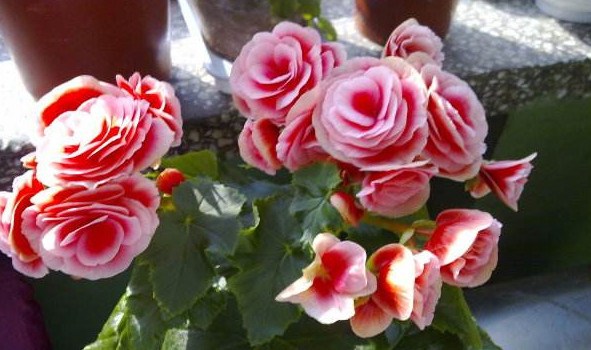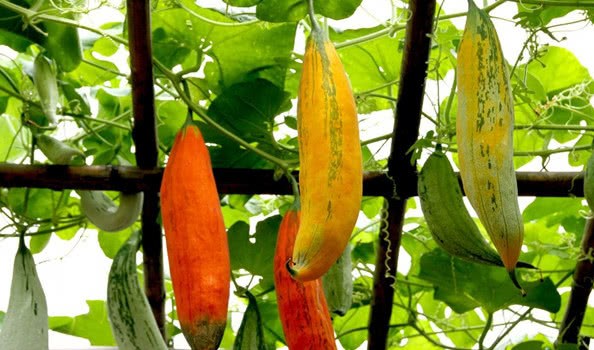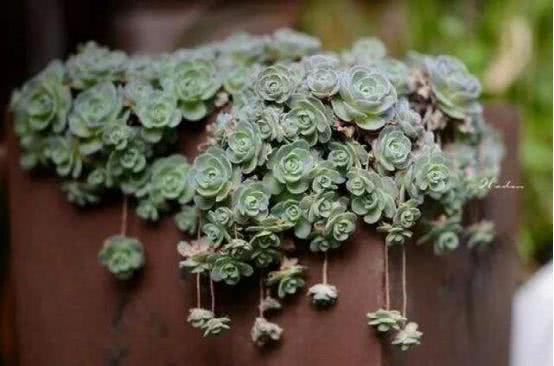How to cultivate Rieger Begonia? Scientific cultivation and Management skills of Rieger Begonia in greenhouse

Rieger Begonia is a rose begonia, which is characterized by rich colors and beautiful flowers. because of its unique ornamental value, it is a new favorite of indoor ornamental flowers, both flowers and leaves, and it is a very good potted flower. the following is a detailed greenhouse Rieger Begonia scientific cultivation and management skills, relatives who like flowers and plants should not be missed.
Facilities and equipment
Rieger crabapple is mostly produced in greenhouses. The greenhouse is equipped with seedbed, circulating fan, cooling water curtain, supplementary light and other equipment. In order to facilitate daily management and prevent stagnant water, the nursery bed should be more than 45 cm from the ground, the ground should not be hardened, and weeding should be done regularly. Usually, the indoor temperature is adjusted by a wet curtain-fan. This can effectively control the growth of Rieger Begonia. The top of the greenhouse is equipped with an outer sunshade net and a sunscreen. The outer shading net is used to reduce the light intensity, and the black curtain is used to reduce the hours of light when promoting flowers.
Choose and buy commercial seedlings
In order to save costs and improve the survival rate, the seedlings of Rieger Begonia should be purchased from a special planting base. The qualified commercial seedlings should grow more than 5 weeks after cutting, the stem is erect, the leaves are extended, the mature leaves are more than 3, at the same time, the root system is full of matrix, the color is uniform, the plant height is less than 12 cm, and there are no diseases and insect pests.
Upper basin
A flowerpot with a straight diameter of 14 cm was selected, and the cultivation substrate was peat fine fiber and perlite at 4:1, stirred evenly and placed on the seedling bed in turn. There is no gap between the basins. Put a Rieger crabapple seedling in each pot, dig holes by hand, plant seedlings, plant depth to the original soil dunes, not too deep or too shallow, and then gently compaction.
Environment management
The seedlings that have just come into the pot need to be watered immediately. However, it is important to pay attention to the slow pouring of small water until the matrix is thoroughly poured. In general, it is watered twice a week in summer and once a week in winter. At this time, the indoor temperature is controlled at 20 ℃ left and right.
The daily light hours in the seedling stage remained at 18 h. If the light intensity is too high, it will affect the healthy growth of seedlings. The light intensity in the first two weeks should be less than 10,000 lx. When the light intensity begins to increase in the morning, the sunshade net should be pulled up in time. When the light is insufficient at night, the supplementary light should be turned on, and the light intensity of the supplementary light is 100 lx. From the 3rd week, gradually increase the light intensity, the maximum can not exceed 22000 lx, also use the sunshade net and supplementary lights to adjust. Every morning and evening, observe the leaf surface of Rieger Begonia, if there are water droplets, it is the plant spitting phenomenon (more summer occurs), the humidity in the greenhouse should be reduced in time, so as not to affect the growth of plants. In the second week after planting, fertilize once and irrigate with water.
Topping
Topping is needed when the Rieger Begonia plant has five mature leaves. Because topping can make the plant shape fuller, the quality of finished flowers can be improved accordingly. Counting upward from the root, the core buds that appear on the fifth leaf are to be removed. At this time, the plant is smaller, the leaves are compact, and the core buds are smaller. Stem and other leaves should be avoided when topping.
Adjust the distance between basins
About the fourth week after topping, the height of Rieger Begonia seedlings reached 18 cm, and new branches appeared. The mature leaves were more than 12, and the circumference diameter was about 15 cm. At this time, the distance between pots should be adjusted, and the interval between flowerpots was about 10 cm, so as to give Rieger Begonia more growth space. In order to fully accept the sunlight and grow evenly, the weak leaves of each plant are selected to face the direction of direct sunlight. According to the different regions and seasons, from the beginning of planting, after 6-9 weeks of management, the vegetative growth of the seedling stage has been completed and entered the flowering stage.
Flowering stage management
Rieger Begonia is a short-day flower, reducing the number of hours of light can promote flower bud differentiation. Every day in the early morning and evening when the natural light is weak, open the shading curtain outside the greenhouse to cover the plants, so that the daily light time is no more than 10 hours.
After about 2 weeks of flowering, the buds of the plants with earlier flowering stage had bloomed, and the average number of buds on each plant was more than 8, which entered the management of flowering period.
Florescence management
The number of flowers is an important standard to measure the finished flower quality of Rieger begonia, and florescence management is a very important stage to improve the quality of Rieger begonia. High-quality Rieger Begonia flowers not only continue to open the existing buds, but also continue to produce new buds. The temperature of the flowering management stage is the off key. The temperature in the shed is controlled at 18-19 ℃, which can make the flowers better coloring and brighter, and the edge of the bud is not easy to aging. Below 16 ℃, the buds are not easy to open, and flowers that are already in bloom will fall. The compound flower fertilizer with a ratio of nitrogen, phosphorus and potassium at 10:20:30 was diluted to 1000 to 1500 times by adding water, and irrigated with water to ensure the quantity and quality of flowers. The air humidity is set at 65% and 75%. Water once a week. The light intensity is less than 22000 lx and the light time is 12 to 14 hours. After 2 to 3 weeks of growth, most of the buds on the plant open, when the plant height reaches 25 to 30 cm, the circumference diameter is not less than 25 cm, the branches are not less than 3, the root system is developed, and there are no diseases and insect pests, so it can be packaged and listed on the market.
Pest control
Disease
Leaf spot disease
Leaf spot is a common disease of Rieger Begonia. At the initial stage of the disease, spots appeared on the back of the leaves, and in severe cases, the spots gradually turned into water stains. When the plant is first infected, cut off the infected branches and leaves in time, you can choose to use 72% "agricultural streptomycin" 4000 times solution, 30.3% "tetracycline" 1000 times or 77% "can kill 400 times liquid spray, spray once every 7 to 10 days, 2 times for 3 times. If the disease is serious, the whole plant must be removed to prevent the disease from spreading.
Grey mold disease
Botrytis cinerea often occurs in the lower leaves. Watery spots appear at the onset of the disease. Then the spots blackened and the cells and tissues died. The cause of the disease is generally due to the large temperature difference between day and night, high humidity and stagnant water on the leaf surface at night. Keeping the leaf surface dry at night is beneficial to prevent the occurrence of gray mold. When the disease occurs, remove the diseased leaves in time and spray them with "Yili" and "Botrytis cinerea".
Insect pest
The common pests of Rieger Begonia are cotton scale, aphid, snail, slug, thrips and whitefly. Prevention should be given priority to in production. Insecticide can be sprayed once a month, and greenhouse management can be strengthened to prevent pests from being carried into the facility by staff.
Packaging on the market
Rieger Begonia needs to be shaded before listing. Open the sunshade net and wet curtain-fan system to provide a cooler environment for Rieger crabapple, which can prolong the fresh-keeping time of the plant in transportation. Then put the plant into the bag, but you need to pay attention to the packing box can not be squeezed, otherwise the plant will be crushed, affecting the quality.
Rieger Begonia is one of the most important ornamental plants in four seasons at present. It has a long flowering period and various flower shapes, and is deeply loved by people. Please try to plant such a beautiful flower.
- Prev

How to cultivate mouse melon? Planting and maintenance skills of mouse melon in greenhouse
Mouse melon is a new type of melon and fruit, which can not only be eaten but also used for viewing. Its characteristic is that it looks like a mouse. The young melon is green and slowly turns red after it is stated. It has a very high ornamental value.
- Next

It is not difficult to raise Get for succulent beauty. Skills can be exploding.
Beauty succulent has always occupied the first place in the succulent family and won the favor of the public. The mother of a good friend of the editor especially likes the beauty department. Every time she goes to the light bird market to look for traces of the beauty department's succulent plant, but every time she buys it back and raises it.
Related
- Wuhan Hospital Iron Tree Blooming Result Was Instantly Frightened by the Gardener Master
- Which variety of camellia is the most fragrant and best? Which one do you like best?
- What is the small blue coat, the breeding methods and matters needing attention of the succulent plant
- Dormancy time and maintenance management of succulent plants during dormancy
- Minas succulent how to raise, Minas succulent plant pictures
- What are the varieties of winter succulent plants
- How to raise succulent plants in twelve rolls? let's take a look at some experience of breeding twelve rolls.
- Attention should be paid to water control for succulent plants during dormant period (winter and summer)
- Watering experience of twelve rolls of succulent plants
- Techniques for fertilizing succulent plants. An article will let you know how to fertilize succulent plants.

